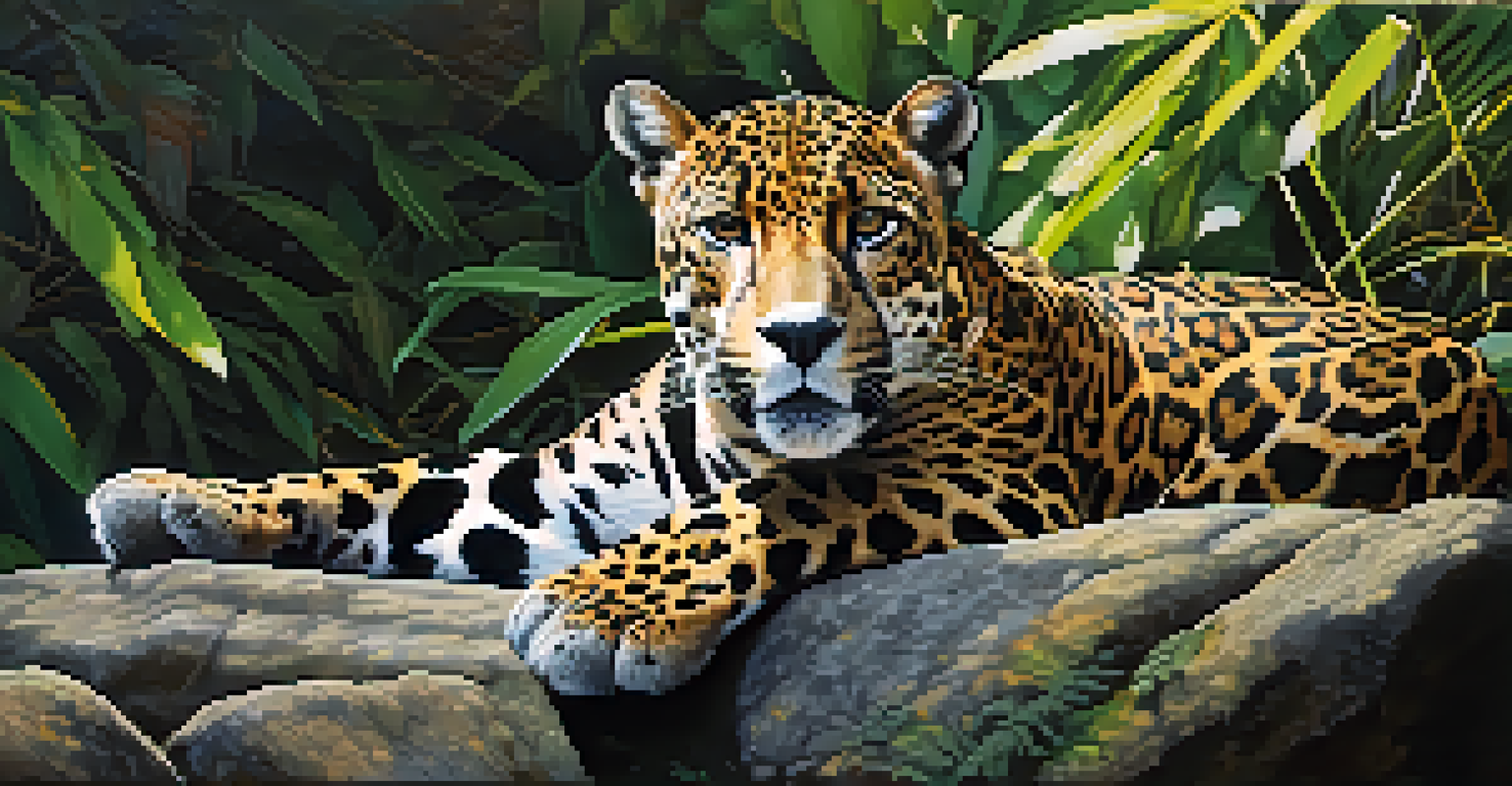Exploring the Atlantic Forest: Wildlife Watching Tips

Why the Atlantic Forest is a Wildlife Paradise
The Atlantic Forest, a UNESCO World Heritage site, is teeming with biodiversity. Stretching along the southeastern coast of Brazil, this lush ecosystem is home to thousands of plant and animal species, many of which are found nowhere else on Earth. With its unique mix of tropical and subtropical climates, the forest creates ideal habitats for an array of wildlife.
In every walk with nature one receives far more than he seeks.
From colorful birds like the Spix's Macaw to elusive mammals such as the jaguar, the Atlantic Forest offers a chance to observe nature in its most vibrant form. The dense foliage and varied terrain make it a playground for both novice and experienced wildlife watchers. This rich tapestry of life is not just a feast for the eyes but also a reminder of the importance of conservation.
Exploring this forest allows you to connect with nature in a profound way. Every rustle in the leaves and every chirp in the trees beckons you to discover the stories of its inhabitants. Whether you're an avid birdwatcher or simply looking to enjoy the great outdoors, the Atlantic Forest is a destination worth exploring.
Best Time to Visit for Wildlife Watching
Timing can make all the difference when it comes to wildlife watching in the Atlantic Forest. The dry season, from May to September, is often considered the best time to visit, as animals are more active and easier to spot. During these months, the weather is generally pleasant, allowing for longer excursions into the forest.

However, the rainy season from December to March can also offer unique opportunities. Many animals, including birds, are more visible as they search for food and water. The lush greenery during this period creates a stunning backdrop for photographers and nature lovers alike, although trails can be muddy and challenging.
Biodiversity of the Atlantic Forest
The Atlantic Forest is a rich ecosystem teeming with unique wildlife and plant species, making it a vital area for conservation.
Understanding the seasonal patterns of wildlife can enhance your experience. Researching the specific species you hope to see can inform your travel dates, ensuring you make the most of your time in this incredible ecosystem. Remember, patience is key; sometimes, the best encounters happen when you least expect them.
Essential Gear for Wildlife Observers
When heading into the Atlantic Forest, having the right gear can greatly enhance your wildlife watching experience. A good pair of binoculars is essential for spotting distant creatures without disturbing them. Opt for lightweight, compact models that offer a clear view, allowing you to see the details of birds and other wildlife.
The wilderness holds answers to questions man has not yet learned to ask.
In addition to binoculars, a camera with a zoom lens can help you capture the stunning sights without getting too close. This is particularly important for shy animals that may flee at the first sign of human presence. Don't forget extra batteries and memory cards to ensure you're prepared for unexpected photo opportunities.
Comfortable clothing and sturdy footwear are also vital. The forest can be humid and buggy, so breathable fabrics and insect repellent can keep you comfortable. A reusable water bottle and snacks are handy for keeping your energy up during long hikes, enabling you to stay alert and ready for any wildlife encounters.
Guided Tours vs. Solo Adventures
Deciding between a guided tour and a solo adventure in the Atlantic Forest can greatly affect your wildlife watching experience. Guided tours often come with the advantage of local expertise, which can enhance your understanding of the ecosystem. Guides know the best spots for sightings and can help you identify various species, making the experience more informative.
On the other hand, solo adventures offer a sense of freedom and spontaneity. You can explore at your own pace, linger at sights that catch your eye, and enjoy moments of solitude in nature. This approach allows for a more personal connection with the environment, but it requires some preparation and knowledge of the area.
Best Times for Wildlife Viewing
Visiting during the dry season enhances wildlife sightings, while the rainy season offers lush scenery and unique animal behavior.
In the end, the choice depends on your comfort level and goals. If you're eager to learn and maximize sightings, a guided tour might be best. But if you prefer exploration and self-discovery, setting out on your own can lead to unexpected and rewarding experiences.
Respecting Wildlife and Their Habitat
Respecting wildlife and their habitats is crucial when exploring the Atlantic Forest. This means observing animals from a safe distance and avoiding any actions that could disturb their natural behavior. Remember, animals are not accustomed to human presence, so it's important to minimize your impact and allow them to thrive in their environment.
Follow the 'Leave No Trace' principles by sticking to marked trails and avoiding littering. This not only protects the forest but also ensures that future visitors can enjoy its beauty. Additionally, educate yourself about the species you encounter, understanding their roles in the ecosystem and the threats they face.
By being a responsible wildlife observer, you contribute to conservation efforts. Each respectful encounter can foster a deeper appreciation for nature and inspire others to protect these incredible ecosystems. In this way, wildlife watching becomes not just an activity, but a commitment to preserving the beauty of the Atlantic Forest.
Top Wildlife Species to Watch For
The Atlantic Forest is home to a staggering variety of wildlife, making it a dream destination for enthusiasts. Among the standout species are the vibrant toucans, with their stunning beaks and lively calls, which can often be spotted flitting among the treetops. These birds add a splash of color and sound to your wildlife watching experience.
Another exciting sighting is the endangered golden lion tamarin, a small monkey with a striking mane. These charming creatures are a symbol of the forest's unique biodiversity and conservation efforts. Spotting them in the wild is a special treat, reminding us of the importance of protecting their habitat.
Importance of Conservation Efforts
Active participation in conservation initiatives helps protect the Atlantic Forest's biodiversity for future generations.
Don't forget about the larger mammals, such as the elusive jaguar and the graceful capybara. Each encounter with these species adds to the thrill of exploring the Atlantic Forest. Being aware of the wildlife you might encounter can enhance your experience, making each sighting feel like a personal victory.
Conservation Efforts in the Atlantic Forest
Conservation is vital in the Atlantic Forest due to its rich biodiversity and the threats it faces from deforestation and urbanization. Numerous organizations and local communities are working tirelessly to protect this unique ecosystem. Participating in conservation efforts, even as a visitor, can contribute to the ongoing preservation of the forest.
Many eco-tourism initiatives support local communities and promote sustainable practices. Choosing to engage with these organizations not only enhances your experience but also helps to fund vital conservation projects. Your presence can make a difference, turning a simple trip into a way to give back to nature.

By understanding the challenges facing the Atlantic Forest and advocating for its protection, you become part of a larger movement. Every effort counts, whether it's spreading awareness or supporting conservation initiatives. Together, we can help ensure that this magnificent forest thrives for generations to come.